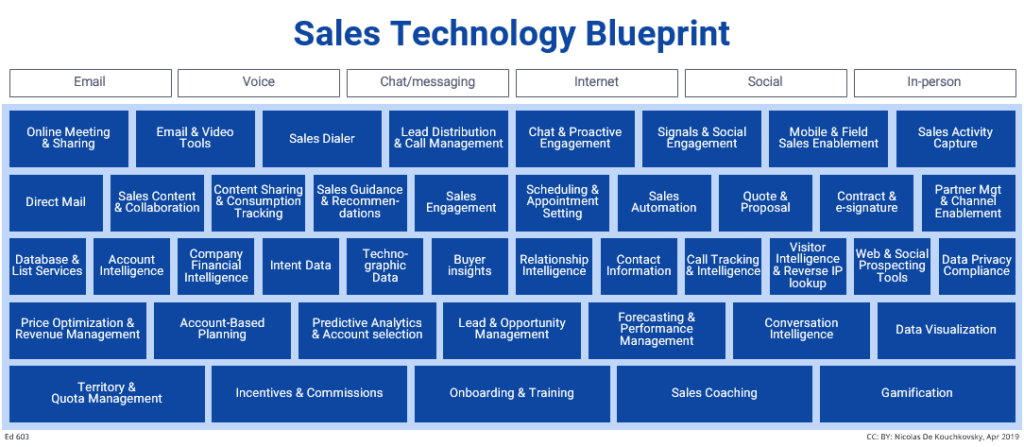This is the eleventh article in our 12-part subscription sales series, designed to help you understand and prepare for the evolving sales landscape. This article explains the best approach to selecting the right sales tools to scale your business. Don’t forget to read the previous ten articles in this series; a new sales strategy, customer segmentation, understanding your customer market, customer-centric sales approaches, understanding the customer journey, the road to profitability, online channels, part one and part two of our data guides and sales processes.
Sales tools
Tools are levelling the playing field between established, large businesses and newer, smaller firms. Sales techniques traditionally adopted by established companies are slow and resource intensive. However, with the help of tools and technology today, online executives are able to quickly identify and establish conversations with senior decision makers.
How to select the right tools
There are thousands of sales-enablement tools available that vary in quality and capability. This can make selecting and implementing tools challenging, but we have some tips to make it easier.
https://www.saleshacker.com/salestech-landscape-2019/

The first rule for selecting tools is to choose the those that support your business processes rather than implementing tools and retrofitting processes around them. The book ‘Good to Great’ by Jim Collins dedicates an entire chapter to technology accelerators. For those who haven’t read it, the crux is that businesses should start with people and processes, and then use technology to accelerate their growth. The clear aim is to get the right people in the right seats on the bus, point them in the right direction, and then use technology to get them to their goals faster.
The comprehensive approach to selecting the right tools is broken up below:
- Map your business processes and identify where you are now and where you want to be (if these are different)
- Select the part of the process you want to optimise
- Determine if there are tools that can accelerate growth
- Map current and desired tools for each activity in the process
- Identify and eliminate gaps and overlaps
- Assign specialists in your business to own uptake and ongoing improvement of each tool
Let’s take a closer look at this approach.
Map each sales activity
Separating each activity helps to determine where tools are currently used or where they could be used to improve performance. Another benefit of tools is that they capture data which can often be fed into the CRM. The more data that can be captured throughout the sales process, the more insights available to drive decisions that optimise sales processes.
Map tools into a sales stack to eliminate gaps and overlap
It is ideal to select tools that meet multiple requirements for different roles in the sales team. However, sometimes tools needed by one team member can differ from those required by another. Mapping tools into a sales stack can make sure that the individual tools function together.
Platforms vs. Application services
When mapping out the tools, it is important to distinguish between Platforms and Application Services. Platforms are the operating system of your organisation. They house data and enable decision making. They should be selected carefully after in-depth evaluation. An example of a Platform is a CRM.
Application services perform very specific functions and can be replaced if necessary. Applications feed into platforms.
How tools can accelerate growth
There are a number of ways that tools can optimise the performance of a business. One example is to take low-value, time-consuming tasks away from team members and have technology complete them instead. Implementing tools to execute low-value tasks frees team members to focus on value-add activities with increased complexity and satisfaction. The business benefit is increased efficiency with current staff, or the ability to avoid hiring additional staff when team members eventually move on.
Other ways tools can drive growth are by:
- Improving customer experience;
- Increasing coverage (e.g. from 8 hours per day on weekdays, to 24 hours per day for 365 days a year);
- Lowering response times (e.g. from hours to minutes);
- Improving efficiency of the sales team (e.g. scaling tech not headcount);
- Providing accurate insights (data) to understand what works and the reasons and metrics behind why it is working; and
- Improving work conditions for team members.
Contact us for more information on how we can help you select the right tools to suit your company’s unique needs and sales processes.
The final article in this series will talk about the killer content you should create and share to maximise your customer journey.

